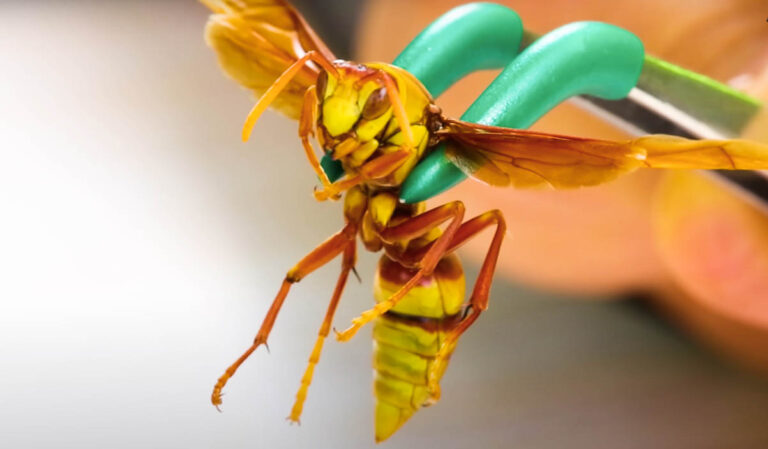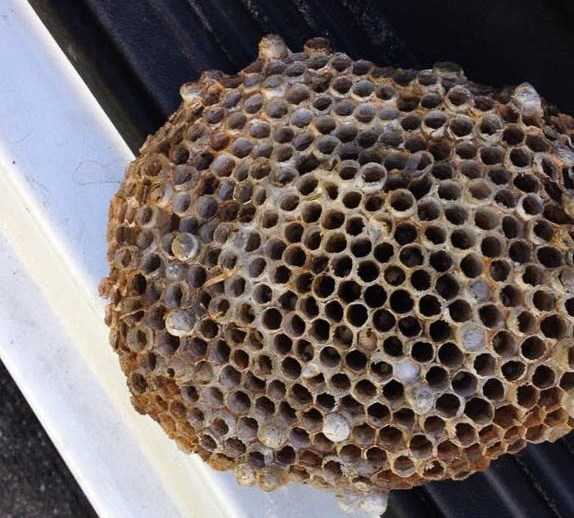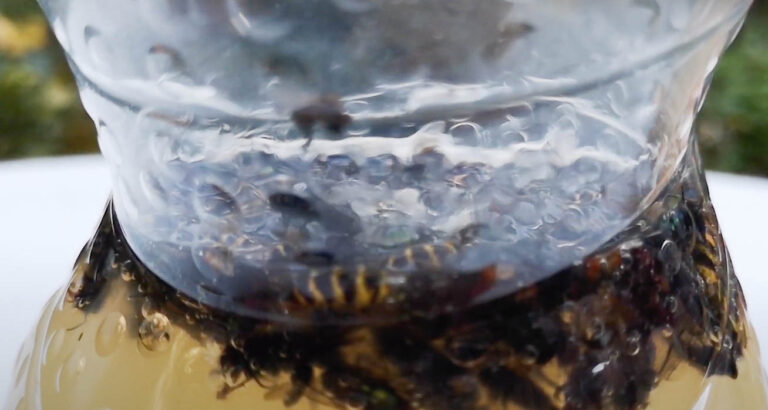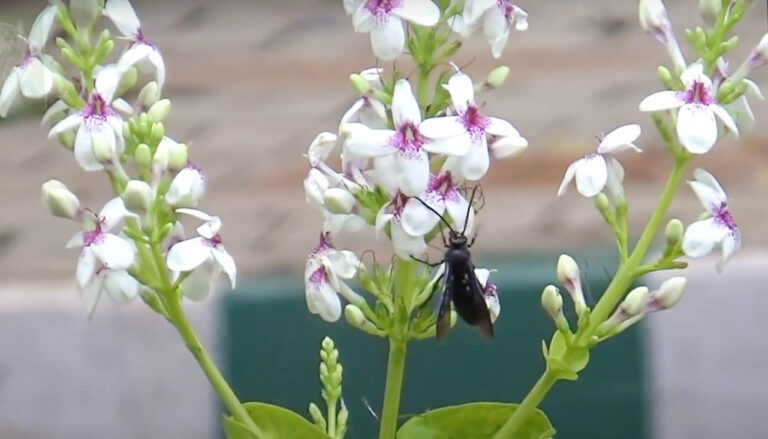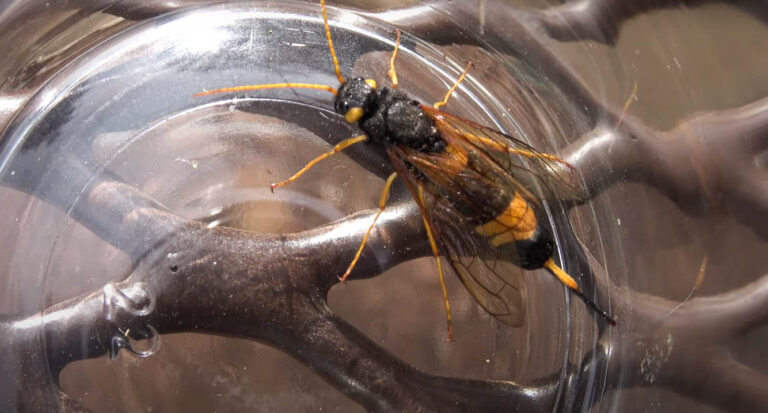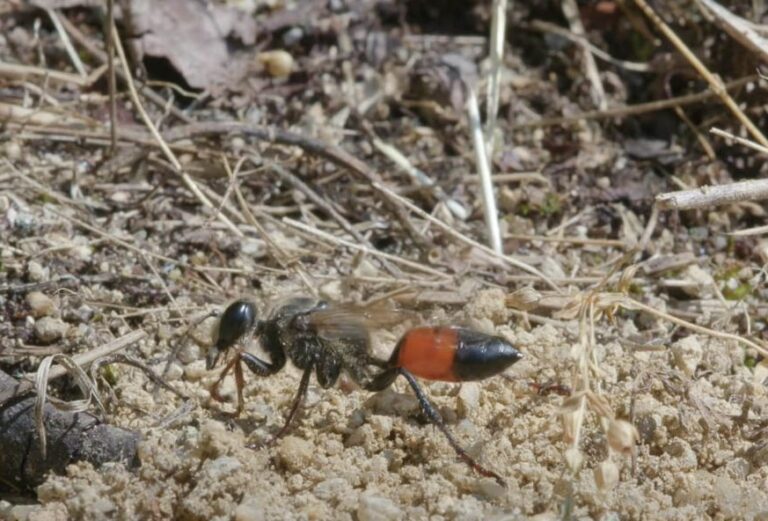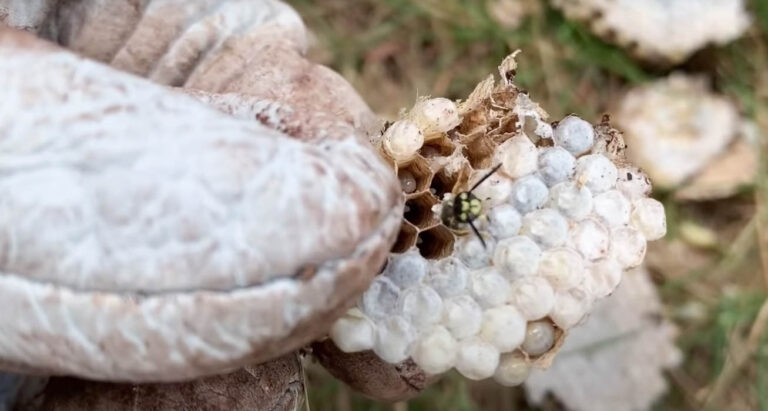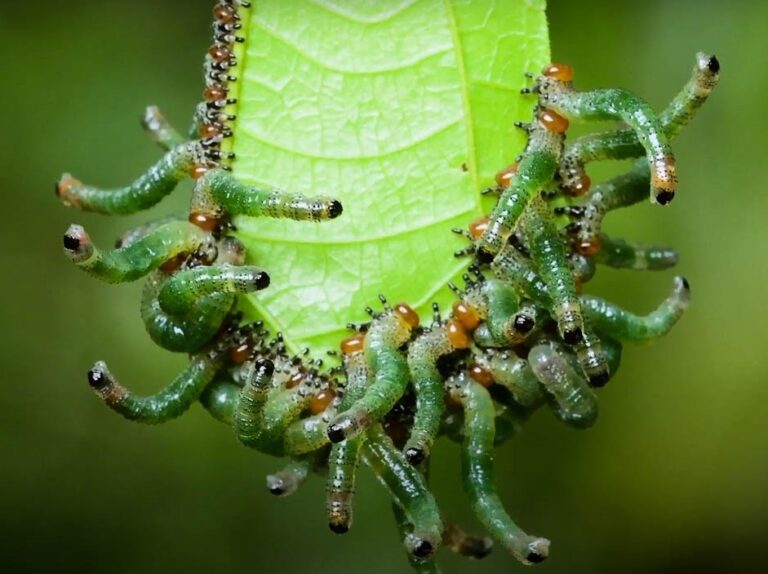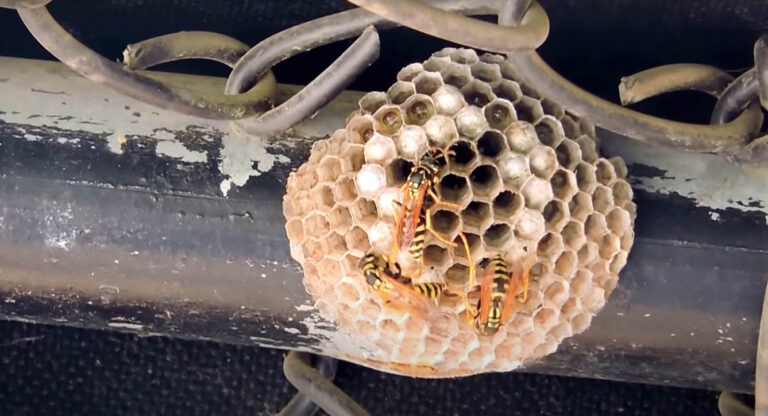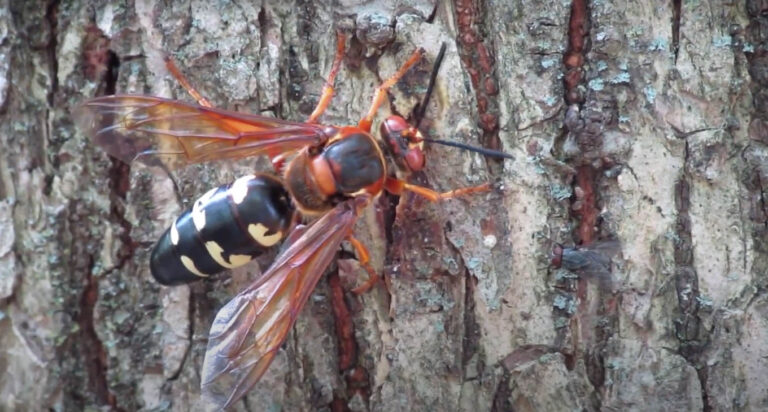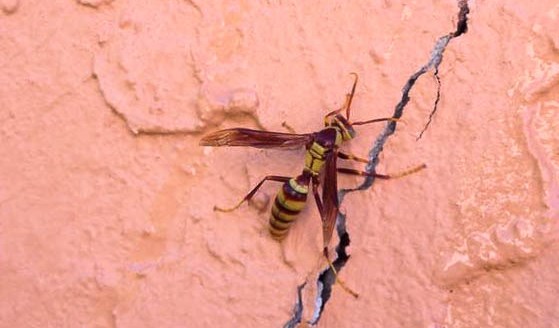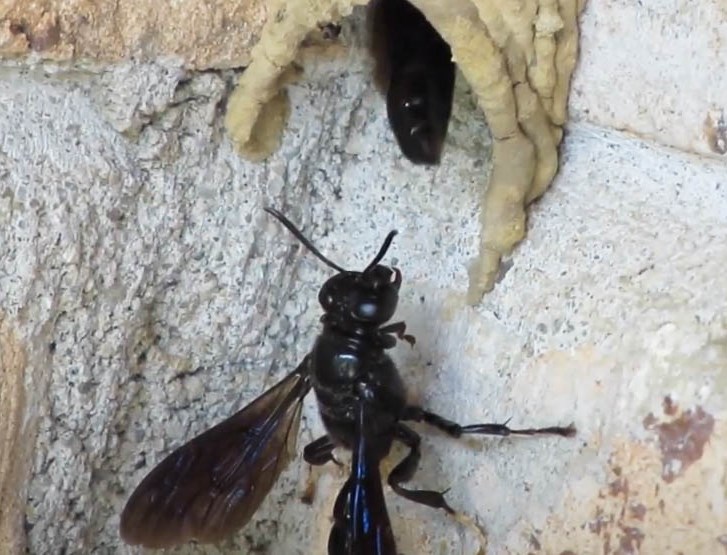About European Paper Wasps
About European Paper Wasps
European paper wasps are not normally a species of wasps that you will see flying around you while you are trying to enjoy a dinner outdoors however, they do have a sting about them if they are threatened. These wasps act as a natural control for many common garden insects that can otherwise destroy our vegetables.
The European paper wasp is considered a social bee that thrives in a large colony that is established every spring. Another name for the European paper wasp is Polistes dominula and they are commonly found in several locations in Colorado.
The main dish of the European paper wasp is the caterpillar. Once the wasp locates the caterpillar the wasp will sting the caterpillar to paralyze it in order to eat it.
Appearance
The European paper wasp is no more than three-fourths of an inch long. The body is solid black with slight yellow markings. The body is slender in design with a thread-like waist. The thread-like waist is a common shape for wasps.
The waist of the wasp is more narrow than the rest of the body and is located between the abdomen and the thorax. The European paper wasp looks for a good location to build their nest.
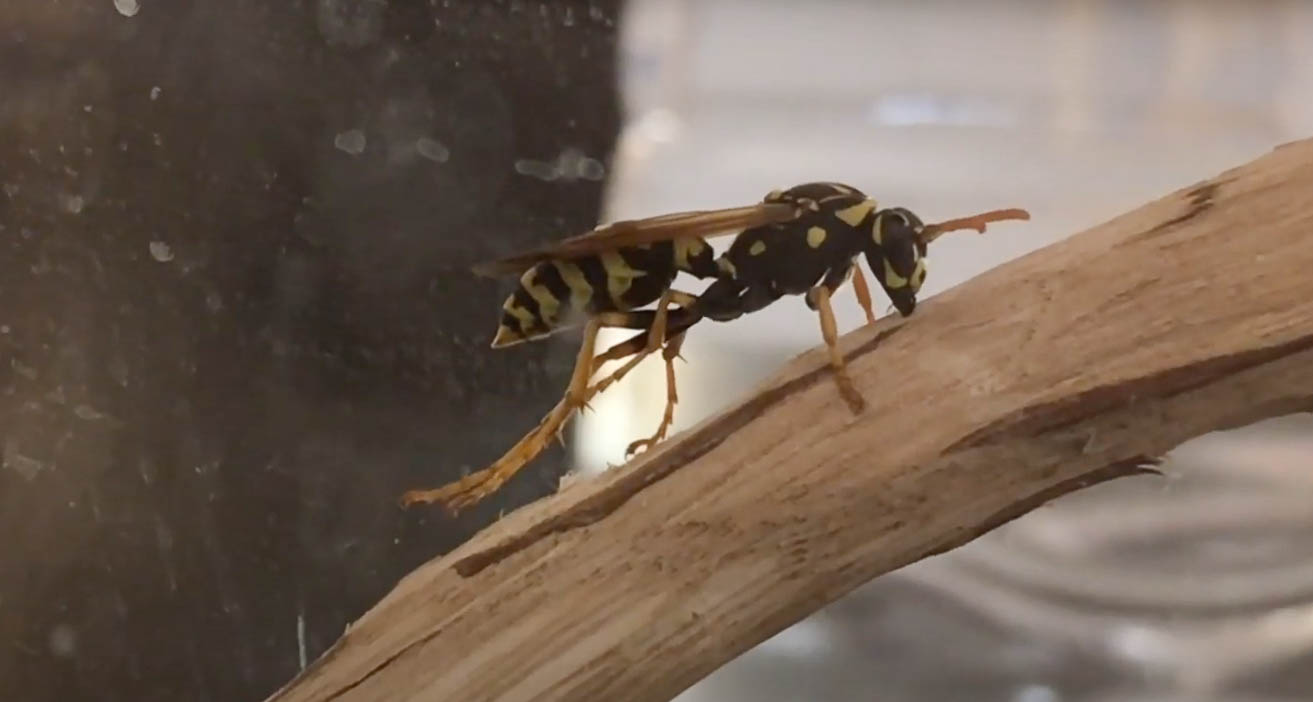
This could include any sheltered area such as eaves of homes or buildings, satellite dishes, inside of a gas grill, inside a vent pipe, inside of wall voids, inside electrical boxes, or underneath a deck. New nests are constructed every year however in some cases, the European paper wasp will reuse an old nest as long as it’s empty.
Life Cycle
In early spring, the queens that were fertilized the previous fall will emerge from their winter hibernation and begin constructing a nest. After the nest is good enough, they will then lay an egg in each of the cells in the wall. The eggs will take a few days before they hatch. This is called the larval stage.
During the larval stage, the female will bring it food that has been chewed up so the larvae can digest it and continue to grow. Once the larval stage is complete, it will move on to the pupal stage. Then it will become an adult where it will then go and join the rest of the colony in keeping up the nest and searching for food.
Once fall arrives, the male workers will die off and the fertile females will find a place to snuggle up for the winter and hibernate.
Habitat
The nest of the European paper wasp is created by the wasps chewing wood fibers that have been gathered up from fences, porch decks, and other wood that has weathered. The female will place a few cells that are in the shape of a hexagon throughout the walls inside the nest. These cells will be used to lay eggs in preparation for young. Once the egg is laid inside the cell, the larvae will hatch and the adults provide it with insects that are crushed up for the larvae to eat. These wasps feast mostly on caterpillars that are found normally by the queen while she is out searching for food.
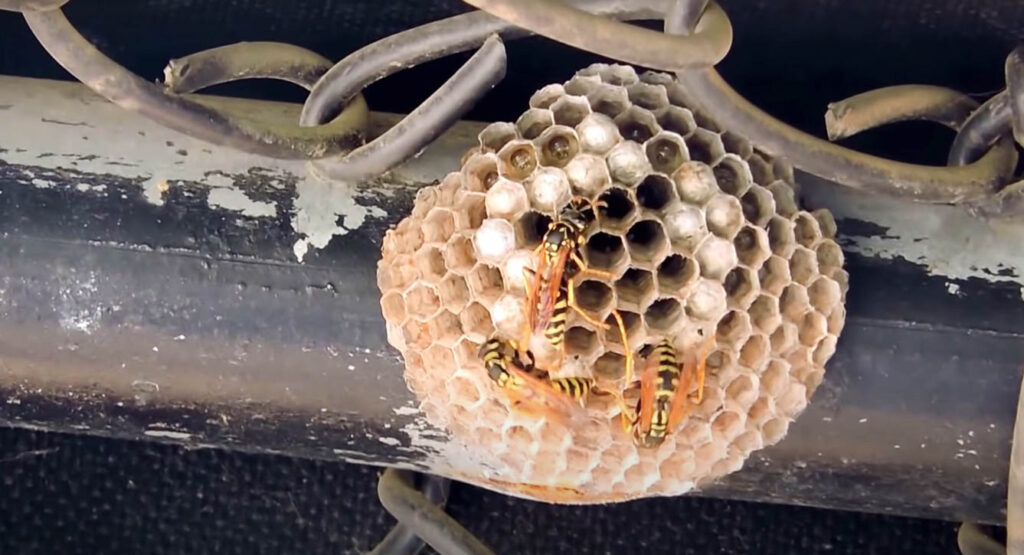
Once the larva is grown, it is sealed up inside the cell and continues to develop into the pupae stage. After three or four weeks after the initial egg is laid, the pupae are then changed over to an adult. The adult wasp will emerge and help with anything needed inside the colony from caring for other young babies, foraging around for food, or working on the nest.
Conclusion
The European paper wasp is not an aggressive wasp. They will sting if they feel trapped or if they are harmed in any way. They are also protective of their nest so if you see wasps circling around, you will want to walk away from them to avoid any confrontation.

